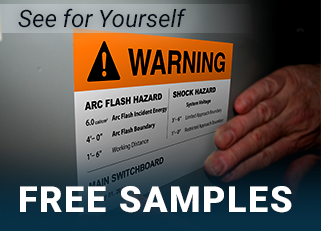Production Begins at the World?s Largest Diamond Mine
03
February,
2023
3 MINUTE READ

In many cultures, a rabbit represents good luck. If this belief holds true for the Chipewyan tribe of the Northwest Territories of Canada, then the Gahcho Ku? area, literally meaning "Place of the Big Rabbit," is aptly named. Set in the Canadian tundra, the Gahcho Ku? Mine yielded a 12.10 carat and 24.64 carat diamond during the ramp up commissioning phase earlier in 2016. Now under production, the Gahcho Ku? will be the world's largest diamond mine. The project is a joint venture between Mountain Province Diamonds Inc. and De Beers Canada Inc., and they expect to sell the mine's first diamond by the end of 2016.
The Gahcho Ku? Mine is expected to yield an average of 4.5 million carats annually during its twelve-year life and is one of seven commercial diamond mines in the Great White North. Although this is great for Canada, it comes at a premium for diamond pricing. In Canada, the average realized price is about U.S. $110 per carat, compared to U.S. $15 per carat in Australia. As well as economics, the new mine is also great for the state of mining overall. Here's why:
A Brief Canadian Diamond Mining History
Canada doesn't have a long history of diamond mining, and most think of mining operations in Africa and diamond trading centers in Europe to be at the helm of diamond labor and commerce. This all changed in 1991, however, when geologists Chuck Fipke and Stewart Blusson found evidence of kimberlite pipes, a host rock that often contains diamonds, about 200 miles north of Yellowknife in the Northwest Territories of Canada. According to an article on Geology.com, BHP Billiton developed one of these pipes (pipes are carrot shaped diamond deposits which are extinct volcanoes) into the Ekati Diamond Mine, Canada's first surface and underground diamond mine.
With the Ekati discovery came thousands of prospectors descending upon Northern Canada. An interesting sidenote: instead of bringing wooden stakes with them to mark their claims, the prospectors intended to purchase stakes near their destination. So many wooden stakes were purchased by the miners that local lumber companies were unable to meet the demand.
By 2006, less than 15 years later, three Canadian mines were producing over 13 million carats of gem-quality diamonds per year, placing Canada as the third largest diamond producer in the world and providing almost 15% of the world's diamonds (by value).
How Safe is Diamond Mining and Can it be Made Safer?
While Canada's diamonds are known for exceptional gem quality, they're also in high demand because they're produced under strict environmental and social regulations. They are not used to finance war, terror, and weapons as has occurred in countries such as Sierra Leone, Liberia, Angola, and the Democratic Republic of Congo.
According to the World Diamond Council, diamond mining uses modern methods and a "clinical approach to sustainability of mining and therefore the impact on the environment is being minimized while the benefits to the communities and countries where they are found are being maximized."
Diamond mining hazards involve rock falls, heavy equipment, explosives accidents, machinery, fall hazards, confined spaces, and exposure to flooding.
PPE Products are important for mining safety. Duralabel offers hard hats (head protection) that meet OSHA and ANSI requirements, keeping miners safe at all times, and reminding them to wear head protection with proper hard hat signage. As well as protective equipment for the head, Duralabel also offers PPE for the eyes and face, too.
Improved Mine Safety Initiatives Led by Canada
With Canada taking a leadership role in modern mining, a new appreciation for safety has emerged. For instance, one of the country's top-producing mines, the Victor mine in Northern Ontario, won this year's eastern division John T. Ryan trophy ? Canada's top award for safety achievement ? with only one medical aid incident and zero lost-time events in 2015. The trophies are awarded by the Institute of Canadian Mining, Metallurgy, and Petroleum and recognize mining operations experiencing the lowest reportable injury frequency per 200,000 hours worked in Canada.
Before mine workers are allowed to begin work, a canine drug and alcohol substance detector checks the workers' belongings to ensure they're adhering to strict zero tolerance rules. According to a May 2016 article in Canadian Mining Journal entitled "Shaking Up Safety Culture," the substance sniffing dog's The safety culture of Canadian mines doesn't stop here. Companies like De Beers offer incentive rewards which can be as high as 25% of salary. They also have peer-to-peer recognition program, where workers nominate each other as "unsung heroes" for following and promoting safe practices. With astonishingly sensitive nose quickly and thoroughly sniffed every box, bag, and person to make sure they were clean of alcohol or illicit drugs?they are among the leading innovations that companies are using to foster a paradigm shift in values and attitudes around health and safety in the mining industry."
As well as safety conscience, mine workers can also rely on information produced by safety companies such as Duralabel, offering continuous improvement for the mining industry guide. The company also has a wealth of mining safety resources including articles on top 10 MSHA violations, maintaining that improving safety can be the result of being aware of the top MSHA violations and eliminating the causes of those violations.
Helping Make Mining Safer
Duralabel' lineup of PPE, including remade respiratory protection signs, premade labels & signs for hand and foot protection helps to defend against hazards common to mining operations. While mining is becoming a safer industry in which to work, as evidenced by the U.S. decline in mining-related deaths as reported by MSHA, all eyes are on Canada to continue to lead the way for stricter safety protection.
RELATED RESOURCES

MSHA Encourages Miners to "Stop and Take a Breath"
MSHA announces "Stop and Take a Breath" campaign, for September 2016 to encourage mining safety. As part of ...
Read
MSHA Coming to Collect on Scofflaw Program
Mining companies cited years ago have not been paying their fines, and the Mine Safety and Health ...
Read
MSHA Announces Winter Alert Campaign
The U.S. Department of Labor's Mine Safety and Health Administration (MSHA) has started its annual winter ...
Read.png)


